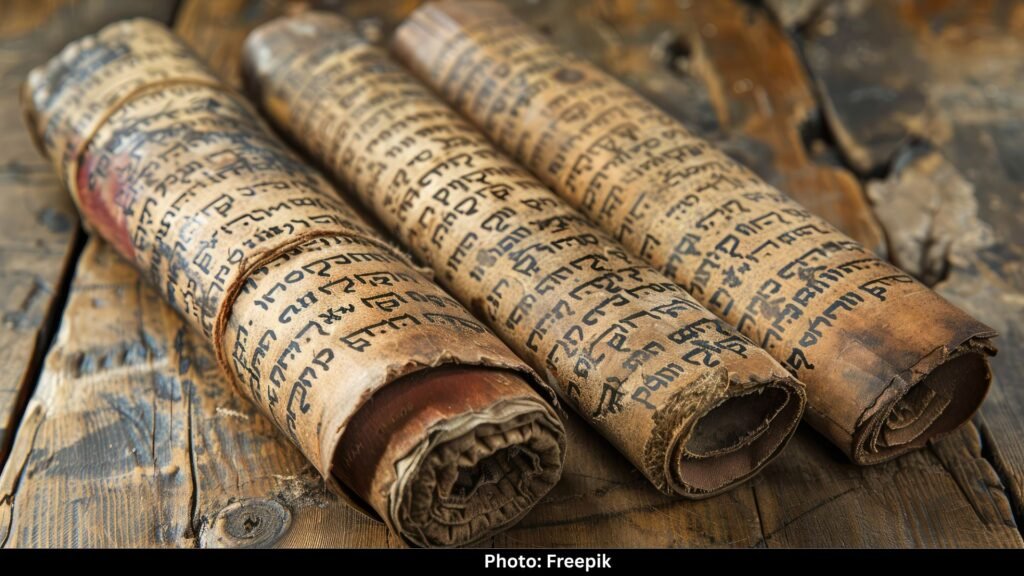The Voynich Manuscript: Some books feel like they’re whispering secrets to you. The Voynich Manuscript does the opposite. It stares back with 240 pages of neat handwriting, strange symbols, and surreal drawings, and it refuses to say a word. Six hundred years after someone first dipped a quill in ink and started scribbling, no one can tell you what it says, why it was written, or even whether it was ever meant to be understood.
Most mysteries fade over time. Somebody digs up a clue, cracks the code, or at least builds a strong consensus about what probably happened. The Voynich is different. The more people try to solve it, the deeper the rabbit hole gets. Historians, cryptographers, AI researchers, and conspiracy theorists have all given it their best shot. The result? Nothing. Just more questions.
The Discovery of the Voynich Manuscript
Let’s rewind to the early 20th century. In 1912, a Polish book dealer named Wilfrid Voynich was poking around an Italian villa that had once belonged to Jesuit priests. He bought a chest of old manuscripts, as dealers do, and tucked inside was a thick, mysterious volume.
Voynich immediately knew it was strange. The pages were filled with an unknown script and colorful illustrations of plants and diagrams unlike anything he had seen. He took it back to London and later to the United States, showing it around to scholars and cryptographers. No one could read it, but everyone was intrigued.
When Voynich died in 1930, the manuscript passed through a few private hands before finally ending up at Yale University’s Beinecke Rare Book & Manuscript Library, where it sits today in a temperature-controlled vault. You can even flip through high-resolution scans online. The problem is, looking at it doesn’t help much. You’ll still be just as baffled as the experts.
What the Manuscript Looks Like
At first glance, the Voynich looks like a typical medieval codex. It’s about the size of a modern hardback, bound in calfskin vellum, with a few missing pages that probably vanished centuries ago. The handwriting is elegant, flowing from left to right in consistent strokes, almost like a professional scribe’s work.
But here’s where things get weird. The alphabet isn’t Latin, Greek, Arabic, Hebrew, or anything else we know. It’s made up of about two dozen distinct characters, with some variations that scholars can’t quite pin down. The words look like words. The sentences look like sentences. Yet none of them exist in any known language.
Then there are the illustrations. They look like they should help—visual context, maybe a clue to what the text is saying—but they raise even more questions. You’ll find detailed botanical drawings of plants that don’t exist, circular star charts with unfamiliar constellations, and pages full of naked women lounging in interconnected baths and tubes like some surreal medieval spa. The artwork is charming, almost whimsical, but it offers no clear answers.
A Language No One Knows
The script of the Voynich has been called “Voynichese.” It flows smoothly, as if it were a real, natural language. Statistical analysis shows that the distribution of characters and word lengths match patterns found in real human languages. It even has something like grammar: some symbols only appear at the beginning of words, others at the end.
But here’s the kicker: no language on Earth matches it. Scholars have compared it to everything from Nahuatl to Hebrew, from medieval shorthand to Chinese, and nothing fits. It doesn’t even look like a simple cipher of Latin or Italian, which would have been the obvious choices for a 15th-century European writer.
What this really means is that whoever wrote it either invented a brand-new language and script from scratch or used an encoding method so clever that even modern computers can’t undo it.
The Sections of the Voynich
The manuscript seems to be divided into sections, as if it were an encyclopedia of strange knowledge.
- Herbal Section: This is the largest part, with hundreds of plant drawings paired with paragraphs of text. The problem is that none of the plants can be identified. Some look vaguely like known herbs, but the roots, leaves, or flowers are always wrong. Were they imaginary species? Lost varieties? Or metaphors?
- Astronomical Section: Circular diagrams, zodiac signs, and star-like shapes fill these pages. There are suns, moons, and stars arranged in unfamiliar constellations. It almost looks like a cosmic almanac.
- Biological Section: This is where the women-in-baths show up. Dozens of nude female figures lounge in pools connected by pipes and vessels. Some appear to be holding stars, others are standing in odd postures. Is it a medieval attempt at anatomy? Some symbolic map of reproduction? Nobody knows.
- Pharmaceutical and Recipes Section: Towards the end, the manuscript turns into what looks like recipes: dense blocks of text, sometimes accompanied by small plant roots or jars. The only problem is that you can’t cook anything from it, since the instructions are unreadable.
So the book isn’t gibberish in terms of structure. It’s organized. It has sections. It looks like it’s trying to tell us something. It just refuses to.
Who Might Have Written It?
When you encounter something this strange, your mind goes straight to the author. Who would spend months, maybe years, writing and illustrating a book in a made-up language?
One early theory was that the manuscript was the work of the English philosopher Roger Bacon, who lived in the 13th century and was known for his interest in alchemy and secret writing. But carbon dating of the parchment places the manuscript between 1404 and 1438, long after Bacon’s time.
Others have suggested it was written by a medieval doctor, recording herbal remedies and medical procedures in code to keep them secret. Another camp points to alchemists or mystics, who often used symbols and obscure languages.
There’s also the possibility that it was a personal project, a private language created by a single eccentric mind. People do invent languages. Tolkien did it. Plenty of children invent secret alphabets. The difference is that this one ended up looking like a masterpiece of consistent, professional-level work.
Attempts to Crack the Code
The manuscript has attracted some of the sharpest codebreakers in history. During World War II, American and British cryptographers who were cracking Nazi codes tried their hand at the Voynich during their downtime. These were people who could untangle Enigma ciphers, yet the manuscript gave them nothing.
In the Cold War era, the CIA and NSA took a look. Still no luck. Linguists tried. Mathematicians tried. More recently, computer scientists and machine-learning models have been unleashed on the text. They’ve found interesting patterns but no real translation.
Every few years, a news headline pops up: “Voynich Manuscript Finally Deciphered!” A Canadian scholar once claimed it was a lost form of shorthand. Another team argued it was encoded Hebrew. More recently, some researchers suggested it might be written in a proto-Romance language. Each claim falls apart under scrutiny. The translations never make consistent sense.
Hoax or Masterpiece?
Of course, there’s the nuclear option: maybe it’s all a hoax. Maybe some clever medieval prankster just scribbled random symbols and doodles to create the illusion of knowledge. If so, it’s the most elaborate literary prank in history.
The problem with the hoax theory is that the text isn’t random. It has patterns, rules, and internal consistency. To fake that convincingly, someone would have had to not only invent a language but also make sure it followed the natural statistical structure of real ones. That’s not impossible, but it’s a lot of effort for a joke.
So we’re left with a dilemma. If it’s real, it’s a lost knowledge system unlike anything else from its era. If it’s fake, it’s the greatest troll job of the medieval world.
Why It Captures the Imagination
You might wonder why people care so much. After all, libraries are full of manuscripts we can’t read—Sanskrit texts, Mayan codices, ancient scripts from forgotten cultures. The difference is that those can often be placed in context. The Voynich has no context. It’s an orphan.
It also sits at a strange crossroads: detailed enough to look serious, whimsical enough to feel otherworldly. The weird plants, the stars, the bathing women—it all looks like it should mean something. The mind itches to make sense of it.
What this really shows is how humans respond to mystery. We hate not knowing. We project our own theories, our own hopes and fears, onto the blank spaces of history. For some, the Voynich is a lost medical text. For others, it’s an alien transmission. For conspiracy fans, it’s a Renaissance-era codebook for secret societies.
What the Voynich Really Says About Us
At some point, the manuscript stops being about the text itself and starts being about us. Why do we need it to make sense? Why do we keep throwing supercomputers at a 15th-century riddle?
The Voynich is a mirror. It shows us our obsession with solving, decoding, mastering the unknown. We can’t stand the idea that someone, centuries ago, could have written something that resists all our tools.
Maybe it was never meant to be read by us. Maybe it wasn’t meant to be read by anyone at all. Maybe it was an experiment, or a meditation, or a piece of art disguised as a book.
Conclusion: A Book Written for No One
The Voynich Manuscript remains what it has always been: a book no one can read. Whether it’s a coded encyclopedia, a lost language, or the world’s most elaborate prank, it stands as a reminder that not everything in history gives up its secrets.
The mystery is the meaning. The blank we can’t fill keeps us coming back, generation after generation. In a world where so many puzzles get solved, the Voynich Manuscript endures like a quiet voice saying: some stories will never be told, and that’s why they matter.




